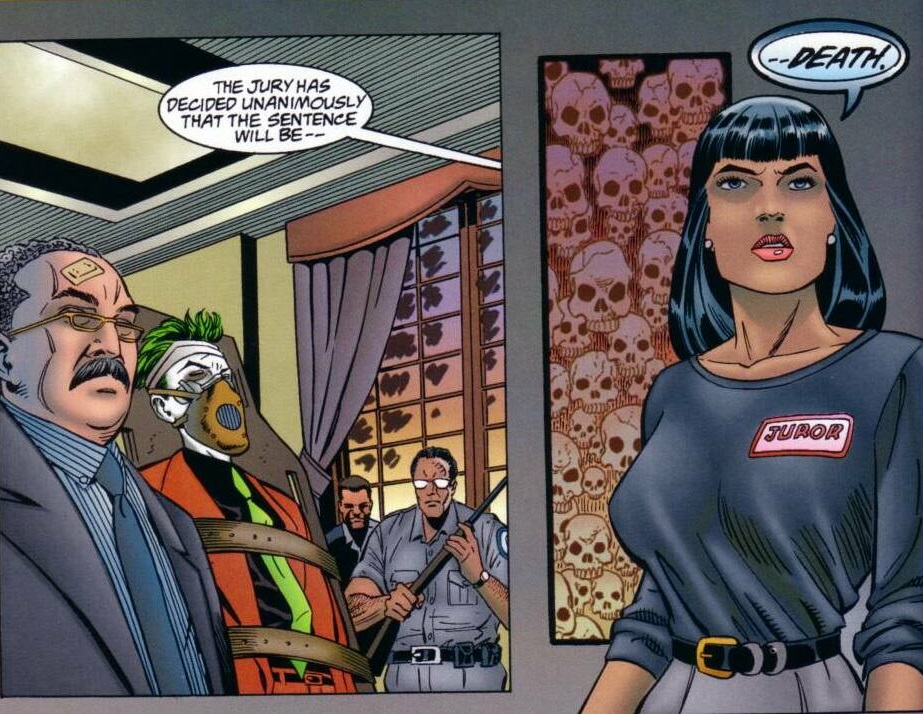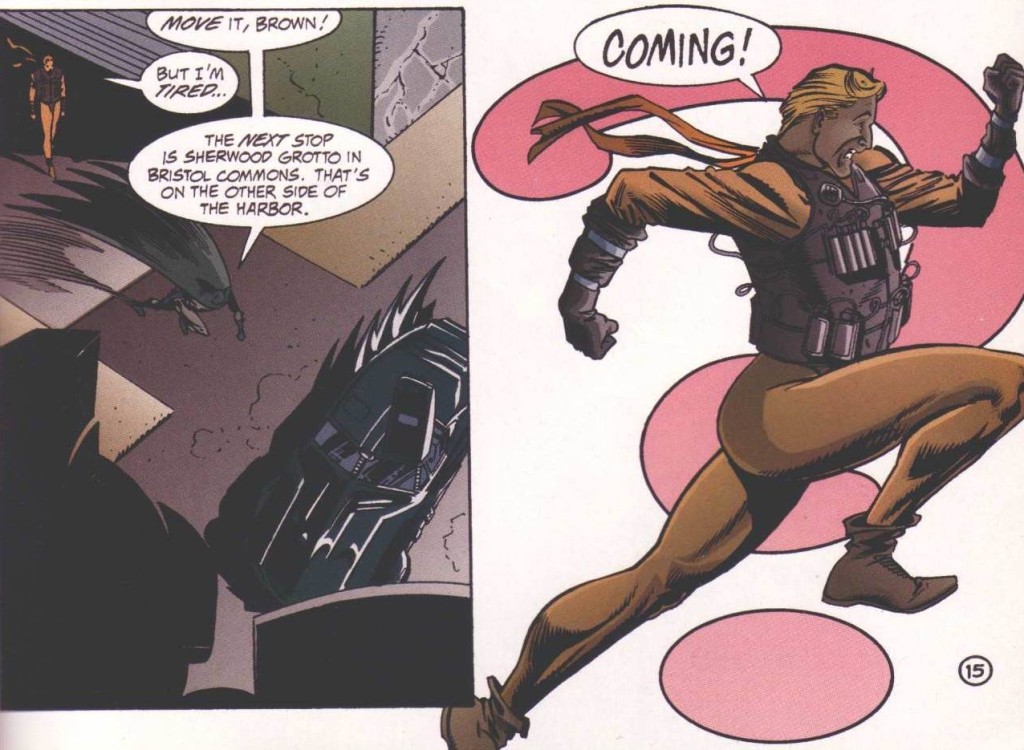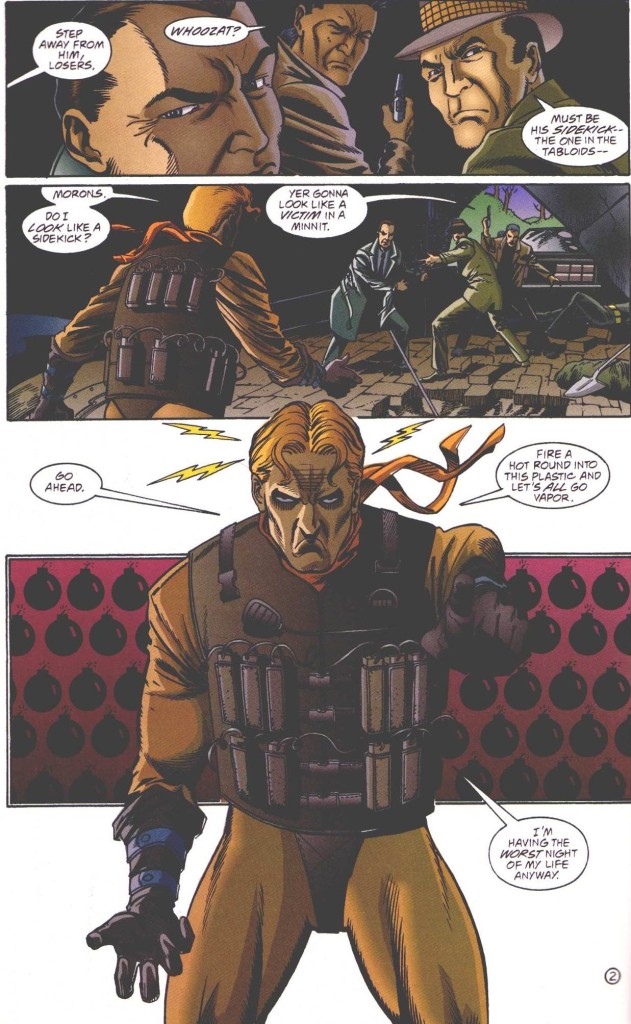When I wrote about Chuck Dixon’s grounded, no-frills approach to storytelling a while back, I briefly mentioned his productive collaborations with a couple of artists whose style also fits this description: Tom Lyle (who died shortly after that post) and Graham Nolan. Rereading material for that write-up, however, it struck me how Nolan – for all his deceptively simple, naturalistic pencils – repeatedly resorted to a decidedly unrealistic effect. Every once in a while, he would fill the background with non-diegetic symbols that illustrated what was on a character’s mind…
The Joker: Devil’s Advocate
It’s not exactly a groundbreaking, experimental trick. Scott McCloud, who devotes a couple of pages of Understanding Comics to the tradition of using expressionistic backgrounds as a tool for indicating ‘invisible ideas’ and emotions (allowing us to read characters’ ‘inner states’), points out that this technique is fairly common, for example, in Japanese romance comics. Yet it’s interesting to see Nolan kept returning to this quasi-Brechtian effect, since it seems so much at odds with his typically straightforward, figurative choices. (I always figured him for a crafstman who shared Howard Hawks’ belief that in the best storytelling you don’t notice the storyteller.)
To be fair, he did it very sporadically and without calling too much attention to himself. Indeed, despite the contrast with the rest of his comics, these panels never take me out of the narrative, as Graham Nolan works them in with a minimum amount of fuss, keeping the symbols to an efficient minimalism. For example, here is Arthur Brown (aka Cluemaster) running around while scared out of his mind about the possibility that the Riddler will blow him up:
Detective Comics #706
The panel comes from the very cool three-parter ‘Badd Girls/Lethal Pursuits/Riddled’ (Detective Comics #705-707, cover-dated January-March 1997), in which the Riddler goes after Arthur Brown, whom he accuses of having degraded his gimmick. The Riddler then puts his own spin on Die Hard with a Vengeance, except that instead of Samuel L. Jackson and Bruce Willis, you get Batman and Cluemaster!
The whole thing is super fun, especially this moment when a pissed off Arthur Brown faces a bunch of gangsters while Graham Nolan’s background assures us that he means business:



